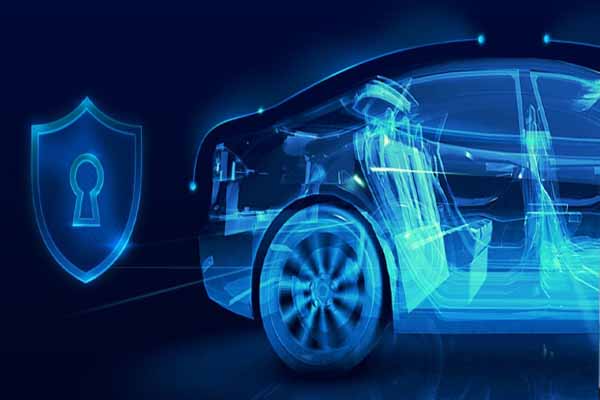The automobile industry has witnessed a remarkable transformation in recent years, driven by technological advancements that have revolutionized the way we perceive and interact with vehicles. Vehicles have become sophisticated machines embedded with cutting-edge technology, from advanced driver-assistance systems to connected infotainment systems. However, this advancement in technology also brings with it the inescapable concern about security threats in the automotive sector. New dangers associated with the digital age include potential cyberattacks, data breaches, and unauthorized access. According to Statista, it is anticipated that between 2020 and 2030, the global market for automotive cybersecurity will nearly double. The report further highlights that while the market was estimated to be worth $5 billion in 2020, it is predicted to grow to $9.7 billion in 2030. Thus, to protect vehicles, drivers, and passengers alike from these dangers, it is now essential to defend the automobile industry against them.
Let’s delve into the pressing need to protect automotive security in the digital age and explore strategies to mitigate these risks effectively-
Robust Cybersecurity Frameworks
Establishing robust cybersecurity frameworks is essential to safeguard automobiles from digital attacks. Automakers and technology providers must follow industry standards and best practices. These frameworks throughout the vehicle’s lifecycle emphasize risk assessment, threat modeling, and vulnerability management. By establishing continuous monitoring, frequent software updates, and clearly defined incident response procedures, automakers can ensure a thorough cybersecurity framework. This proactive strategy makes it possible to identify and address potential risks and vulnerabilities, which lowers the possibility of successful cyberattacks. Therefore, by prioritizing automotive security, automakers, and technology providers can protect vehicles and improve the safety and trust of drivers and passengers in the digital age.
Over-the-Air (OTA) Updates
Delivering secure Over-the-Air (OTA) updates is crucial for maintaining automotive security. With OTA updates, manufacturers can remotely deploy security patches, bug fixes, and software enhancements, significantly reducing the risk of vulnerabilities. According to Statista, it is anticipated that the global market for automotive OTA and cyber security will reach around 770 million dollars. Furthermore, strong encryption and digital signatures must be employed to ensure the integrity and authenticity of OTA updates. Manufacturers should prioritize the timely delivery of security patches to address emerging threats promptly. Automakers can proactively protect vehicles and remain resilient against evolving cybersecurity risks by leveraging OTA technology with robust security measures.
Secure Vehicle Architecture
A secure vehicle design is crucial to reducing potential vulnerabilities in modern automobiles because they have multiple interconnected components and complicated electronic systems. The security strategy that automakers must use must be layered and include measures like secure booting, encryption, and secure communication protocols. Secure booting minimizes the possibility of unauthorized code execution by ensuring that only verified and trustworthy software is loaded during the vehicle’s startup process. This is where encryption plays a crucial role in protecting sensitive data by encoding it, preventing unauthorized access. Implementing robust authentication mechanisms for vehicle access enhances security by verifying the identity of users and preventing unauthorized entry. Thus, automakers can establish a solid foundation for automotive security in the digital age by prioritizing these measures.
Collaboration and Information Sharing
In order to reduce the risks associated with vehicle security, cooperation and information exchange among automakers, technology providers, and security experts are essential. The industry can proactively handle such risks by exchanging information about new threats, vulnerabilities, and responses. Therefore, establishing avenues for open communication and engagement with the cybersecurity community is something automakers should do. Furthermore, bug bounty programs can incentivize security researchers to identify and report vulnerabilities, allowing for timely patching and strengthening automotive security. Hence, it is essential to carry out thorough penetration tests since it helps find vulnerabilities before they may be maliciously exploited. Through these collaborative efforts, the automotive industry can stay ahead of cyber threats and ensure the continuous improvement of automotive security measures.
User Awareness and Education
Ensuring user awareness and education is a critical aspect of safeguarding automotive security. Vehicle owners need to be educated about the potential risks, best practices, and security features of their vehicles. By understanding the importance of cybersecurity, users can take proactive measures to enhance their vehicle’s security. Cyberattack risk can be considerably decreased by taking simple precautions like using strong and unique passwords, avoiding unprotected Wi-Fi networks, and being cautious when downloading third-party programmes. Automakers have a role to play by providing clear instructions, resources, and educational materials to help users understand and protect against common cyber threats. Hence, by empowering users with knowledge, the automotive industry can foster a culture of cybersecurity awareness and resilience.
Paving the Way to Safety: Safeguarding Automotive Security
In the digital age, as cars become increasingly connected devices, protecting automotive security becomes crucial. Automobile manufacturers must improve automotive security by executing a multifaceted strategy that includes safe vehicle architecture, strong cybersecurity frameworks, OTA updates, and user awareness. These coordinated efforts are the efficient ways to guarantee that automobiles are secure, safe, and protected in the digital age.















